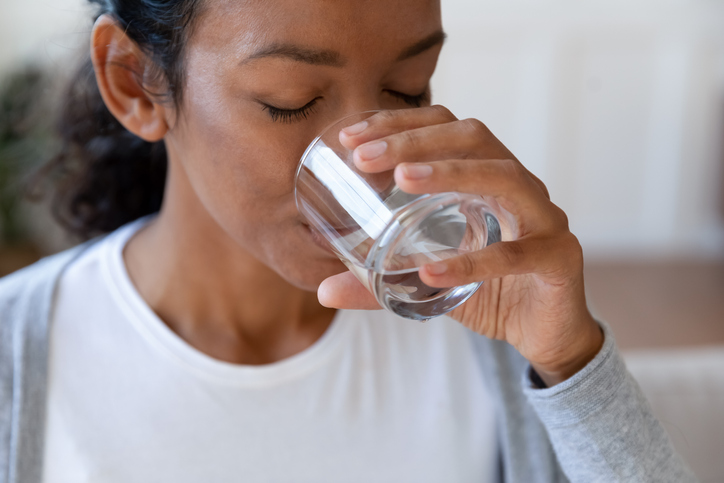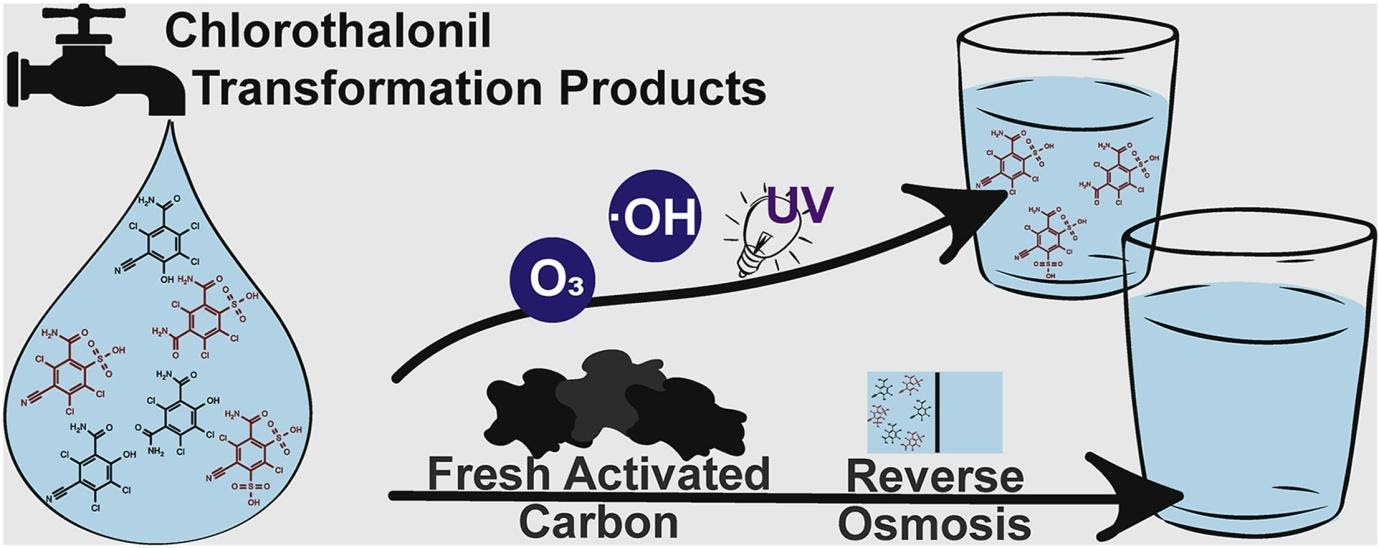Challenges in the Purification of Drinking Water Part 1
15 Feb 2021

Transformation Products
One key role in making potable water “fit to drink” is to ensure that potentially toxic organic compounds are reduced to safe levels. This already challenging task is made even more challenging by the presence of additional compounds – so-called “transformation products” (TPs). These can take at least two forms: new compounds formed when organics in water react in the environment and new compounds produced during the water purification processes themselves. The complexity of the chemistries involved is well illustrated by some recent work by Kiefer et al. on chlorothalonil TPs.1
Chlorothalonil, a fungicide used for decades worldwide, has recently been banned in the European Union (EU)2 and Switzerland due to its carcinogenicity and the presence of potentially toxic TPs in groundwater. However, its prolonged and extensive use has led to a build-up in water sources. Kiefer et al.1 have investigated the concentrations of a number of TPs of chlorothalonil in 77 lakes, rivers and ground-waters and their removal during conventional water treatment and using other purification techniques.
Environmental samples were enriched by vacuum-assisted evaporative concentration and separated by HPLC on a C18 column. Laboratory and field blanks, standards and spiked samples were treated in the same way. The injected volume was 150 μL corresponding to 15 mL of the original water sample. Samples were analysed in sequence, first in negative, then in positive electrospray ionization mode on an Orbitrap high-resolution mass spectrometer. Ultrapure water from an ELGA PURELAB Chorus I was used for the blanks and standards and for the preparation of the eluents. None of the analytes were found in the blanks.

The chlorothalonil sulfonic acid TPs were found to occur more frequently and at higher concentrations (up to 2200 ngL−1) than the phenolic TPs (up to 130 ngL−1). The sulfonic acid TP R471811 was found in over half the samples to be above 100 ngL−1, the drinking water standard in Switzerland and other European countries. The removal of chlorothalonil TPs was investigated in laboratory and pilot-scale experiments and along the treatment train of various water works, comprising aquifer recharge, UV disinfection, ozonation, advanced oxidation processes (AOPs), activated carbon treatment, and reverse osmosis. The phenolic TPs can be broken down during ozonation and by reaction with hydroxyl radicals (OH) in AOPs. In contrast, the sulfonic acid TPs react only very slowly with ozone and
OH and therefore persist after ozonation and
OH-based AOPs. Activated carbon retained the very polar TP R471811 only up to a specific throughput. Reverse osmosis proved capable of removing all chlorothalonil TPs by ≥98%.
The widespread prevalence of TPs and their resistance to standard methods of water treatment is well illustrated by the example of chlorothalonil. It also demonstrates the need for the rigorous assessment of full environmental impact of new agricultural and industrial chemicals and their potential TPs.
Reference:
- Chlorothalonil transformation products in drinking water resources: Widespread and challenging to abate. Karin Kiefer, Tobias Bader, Nora Minas, Elisabeth Salhi, Elisabeth M.-L.Janssen, Ursvon Gunten, Juliane Hollender Water Research, Vol 183, 15 September 2020, 116066
- Commission implementing regulation (EU) 2019/677 of 29 April 2019 concerning the non-renewal of the approval of the active substance chlorothalonil. Accordance with Regulation (EC) No 1107/2009 of the European Parliament and of the Council Concerning the Placing of Plant Protection Products on the Market, and Amending Commission Implementing Regulation (EU) No 540/2011, Official Journal of the European Union (2019)
Dr Paul Whitehead
After a BA in Chemistry at Oxford University, Paul focused his career on industrial applications of chemistry. He was awarded a PhD at Imperial College, London for developing a microwave-induced-plasma detector for gas chromatography. He spent the first half of his career managing the analytical support team at the Johnson Matthey Research/Technology Centre,specialising in the determination of precious metals and characterising applications such as car-exhaust catalysts and fuel cells. Subsequently, as Laboratory Manager in R&D for ELGA LabWater, he has been involved in introducing and developing the latest water purification technologies. He now acts as a consultant for ELGA.
